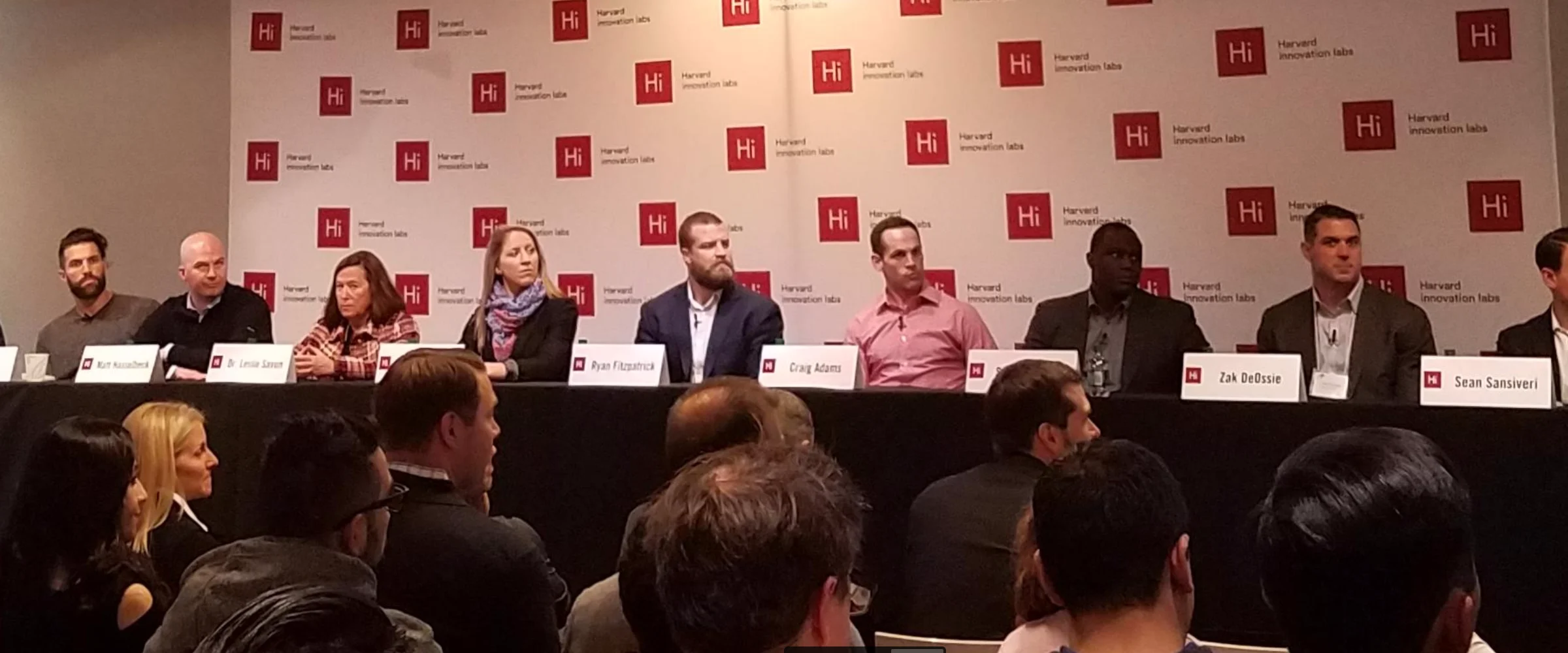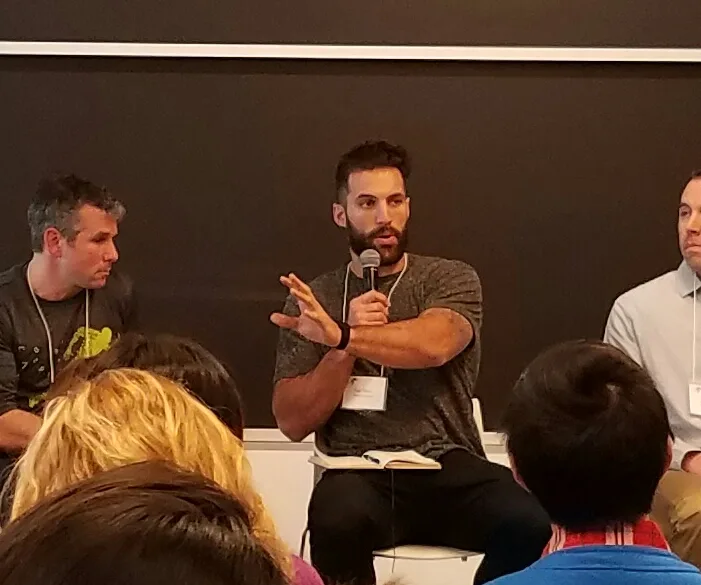Topics
- Article
NFL Players, WHOOP Discuss Wearable Technology Data at Harvard Forum

Last week, in conjunction with the NFL Players Association’s OneTeam Collective and the Sports Innovation Lab, Harvard University’s i-lab hosted a forum on the future of athletic performance entitled The Rise of the Quantified Athlete.
“Bringing together top executives, leading scientists, professional athletes, and entrepreneurs building the next generation of quantified sports innovations, the forum features discussions around advances and issues related to athletic wearables.”
Among the panelists were Harvard graduate and veteran NFL quarterback Ryan Fitzpatrick, ESPN analyst and former NFL QB Matt Hasselbeck, Zak DeOssie of the New York Giants, Team USA and Major League Lacrosse star Paul Rabil, two-time Olympic ice hockey medalist Meghan Duggan, long-time NHL player Craig Adams and former Pro Bowl defensive back Shawn Springs. Also speaking was WHOOP Founder and CEO Will Ahmed.
In addition to the discussion panels, the event included company showcases, affectionately referred to as “a petting zoo of tech we think represents the quantified athlete” by Sports Innovation Lab co-founder Josh Walker. WHOOP, which was born in the Harvard i-lab, was a featured participant.
The Rise of the #QuantifiedAthlete Showcase in less than 10 seconds @whoop @Hudl @woosports @AthletesOfValor @7sbio @behumon @ORIG3N_Inc pic.twitter.com/8JwRelwyzh
— Jodi Goldstein (@jgoldstein) February 17, 2017
The forum began by addressing the question “Why should society care about the quantified athlete?” Sports Innovation Lab co-founders Walker, Isaiah Kacyvenski and Angela Ruggiero each spoke, with Kacyvenski summing it by saying “The elite athlete is an extension of all of us … The quantified athlete is an extension of the quantified self–I want to feel the best that I can every single day.”
In a discussion surrounding the next generation of fitness trackers, Rabil (pictured below wearing a WHOOP Strap) mentioned that he recently began using WHOOP, free of any endorsements. He’s tried a great variety of wearable devices and had this to say about what he’s looking for:
“Am I prepared for this particular training session in front of me? … That starts with Recovery. Now I’m getting that data. It’s the most intricate that I’ve had.”

Dr. Charlene Mello, chief scientist at the U.S. Army Natick Soldier Research, Development and Engineering Center, spoke in regards to military applications of wearables for the “tactical athlete.” “Special forces have performance metrics that compare to elite athletes … but they don’t have the same comforts of daily life,” she said. “They’re often sleep deprived with tremendous load.” Mello also raised the question “How much do we consider the [wearable device’s] data when making critical decisions?”
When the topic turned to the software that’s changing how we analyze performance, Ahmed discussed the importance of tracking what athletes are doing when they’re not training, as well as how WHOOP uses heart rate variability (HRV) to calculate daily Recovery:
“What gets us really excited–what can you do to perform at a higher level during the other 20 hours a day? … Our recovery is now correlating with all sorts of different performance metrics; if you have a higher recovery in the morning you’re more likely to shoot better free throws in basketball, or run a faster time trial, or swim faster laps. We’re seeing this across all sorts of different verticals. … It’s the Moneyball 2.0 moment in sports.”
On the same panel was Doug Casa, Professor of Kinesiology at the University of Connecticut. When asked about a nine-month-long sleep and recovery study involving UConn athletes wearing WHOOP, Casa said “give credit to WHOOP, they’re one of the companies that’s willing to invest in the research to make sure they actually have the data. … When you’re trying to validate a product like this you can’t just take a snapshot.”
WHOOP Founder and CEO Will Ahmed speaking on a panel hosted by @ShiraSpringer at @sportsilab event for the #QuantifiedAthlete pic.twitter.com/TdLRYaCe2f
— WHOOP (@whoop) February 17, 2017
The day’s final discussion involved the NFL players’ thoughts on the future of wearable technology in sports. Hasselbeck speculated on the direction it might be headed for the fans watching on TV, saying “Imagine how cool it would be to see [NFL kicker] Adam Vinatieri’s heart rate as he lined up for a game-winning kick?”
Springs wondered about regulating the ownership of the data (“Can the team use it against me?”), an issue the NBA’s most recent collective bargaining agreement is attempting to address. Hasselbeck also suggested that new performance technology is particularly intriguing to aging pro athletes, noting “as you get older, availability is job security.” He cited Tom Brady as an example, saying “we wonder why he’s playing his best football at a time when most people should be done with their career.”
Fitzpatrick questioned if it might take longer than it should for the NFL’s teams and players to accept wearables into the sport, mentioning that “coaches hate change.” DeOssie agreed, but pointed out that the next generation of athletes will likely spur the transition if wearables become the norm on the youth level.
How do today’s pros feel about embracing new levels of physiological data? “Give me every single piece of data there is Monday through Saturday, but don’t give me anything on Sunday [game day],” said DeOssie.